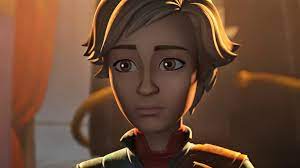As “The Bad Batch” enters its third season, fans of the Star Wars universe are eagerly diving back into the lives of Clone Force 99 and the enigmatic Omega. This ragtag group of genetically modified clone troopers, introduced in “The Clone Wars” and further explored in their own series, has captured the hearts of viewers with their daring missions and deep bonds. One of the lingering questions that fans have is about the age of Omega and how the unique aging process of the clone troopers affects the dynamics within the team.
Omega: The Enigma in the Clone Force
Omega, introduced as a mysterious child working on Kamino, quickly became central to the story of “The Bad Batch.” Her exact age, while not explicitly stated, is a subject of much curiosity among fans. Given her appearance and level of maturity, it’s speculated that she is in her early teens during the events of the series. However, Omega is no ordinary child; she is a genetically unaltered clone of Jango Fett, similar to Boba Fett, which makes her unique among the clones.
Unlike her brothers in Clone Force 99, Omega does not possess the accelerated aging feature that was engineered into the clone troopers to rapidly age them to adulthood. This means that Omega ages at a normal human rate, providing a stark contrast to the rest of the clone troopers, who experience a condensed lifespan.
The Clone Troopers: Engineered for War
The clone troopers, created from the genetic template of the bounty hunter Jango Fett, were designed to age at double the rate of a normal human. This accelerated aging process was a strategic decision by the Kaminoans, allowing the Republic to quickly amass a large army to fight in the Clone Wars. By the time of “The Bad Batch,” many of the clone troopers we’ve grown to know, such as Captain Rex, are technically in their late 20s to early 30s, but physically, they are much older due to their genetics.
This unique aspect of the clone troopers adds a layer of tragedy to their existence. Engineered for war and loyalty, their shortened lifespans underscore the disposability with which they are viewed by those who created and commanded them. For Clone Force 99, this reality is ever-present, influencing their decisions and their desire to find a purpose beyond the war.
The Dynamics Within The Bad Batch
The age and unique genetic makeup of Omega bring an interesting dynamic to her relationship with the rest of Clone Force 99. As a child with normal aging, she represents a future that is vastly different from that of her brothers. Her presence in the team not only adds a familial aspect but also serves as a constant reminder of the life that exists outside of being soldiers. For the members of The Bad Batch, Omega is both a sister to protect and a symbol of hope for a life beyond the battlefield.
Looking Ahead
As “The Bad Batch” Season 3 unfolds, the exploration of Omega’s character and her relationship with the clone troopers promises to delve deeper into themes of identity, purpose, and family. The series continues to challenge the notion of what it means to be a clone, offering a more nuanced look at the lives of these characters who were born to fight but strive to live.
In the Star Wars universe, where the fate of galaxies hangs in the balance, the story of Omega and the clone troopers of The Bad Batch is a poignant reminder of the personal battles fought in the shadows of the larger war. Their journey is one of self-discovery, redemption, and the search for a place to call home.







